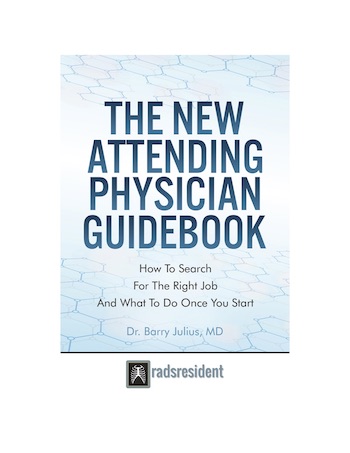
For those of you that practice radiology, how often do clinicians interrupt you on a busy rotation? And, what percentage of the time does the clinician provide helpful information without interrupting your train of thought? I know I can only speak for myself, but many clinical interactions prevent me from completing my work, increase my inattention, and should probably occur at another time. How often does a clinician stop by to ask you when you will finish his patient’s report only to lengthen the time to complete the dictation? Assuming my experience is similar to others, I believe those clinician interruptions can overwhelm many positive daily interactions.
Plus, based on the evidence (check out Should Radiologists Ignore The Phone?), we know that interruptions cause an increase in error rate with our reads. So, therefore, clinician interruptions become much more than an issue of mere convenience. Instead, we need to take clinician interruptions very seriously. To cover this longstanding theme, we will discuss whether clinicians and providers should be allowed to enter the radiology reading room. Then, we will talk about potential solutions to these problems. So, let’s begin!
Reasons To Allow Clinicians To Enter The Reading Room
Knowing that interruptions prevent us from reading cases to the best of our ability, one could make a case that we should nail our reading room doors shut. But fortunately (or unfortunately!), this cannot happen in reality. Moreover, it probably is not such a good idea.
So, what are some legitimate situations when a clinician in the room may enhance the reading of our cases? Well, first of all, we must welcome all good histories that help us to make a diagnosis. A clinician coming into the room with this message can become a lifesaver, literally. The clinician can change the diagnosis and management.
Second, a clinician in the room can help when we need to relay an urgent message. For instance, perhaps you find an impending aortic rupture and need to get in touch with the vascular surgeon. Wouldn’t it be nice if the physician just happened to be standing next to you instead of calling all over the hospital to find him?
And then, sometimes, a clinician can enhance our reads when we are unsure of the best way to manage the patient. For instance, maybe, you recommend an MRI, but unknowingly the patient already has a pacemaker. Yet, if a knowledgeable clinician stood next to you, you would ensure that the patient had received some other test, such as a gallium scan.
Clinician Interactions That You Should Prevent
As I discussed above, clinicians should not ask the radiologist when he will complete the study. An assistant or secretary should handle these requests. Furthermore, the technologist or clinician should mark a study as STAT, priority, or routine. And the radiologists should dictate these cases in an appropriate order from most emergent to least. For this reason, a clinician stopping by the reading room interrupts the workflow and is redundant.
In addition, as much as I like medicine rounds from an educational point of view, having a team of medical physicians interrupting the radiology workflow on initial patient reads does not contribute to good patient care. Educational rounds during live readouts can disrupt search patterns and often warrant inefficient rereads of the same films. Furthermore, these types of interactions can cause other errors. On the other hand, educational rounds at a specified time after the radiologist made the reading would not detract from patient care.
Finally, as much as I like a suitable, quality, friendly conversation, clinicians should not use the reading room as a place for small talk. These sorts of conversations can also act as a nidus for errors!
What Are Some Potential Solutions To Allow Useful Clinical Interactions While Mitigating Interruptions?
Unfortunately, the task is not easy. But here are some logical recommendations:
First of all, having a “1st line triage” can help the process of selecting who can enter the reading room. Like other professionals with secretaries and assistants, radiologists should also have clinical assistants who can manage interactions with our colleagues. Radiology assistants can serve this function. (a more expensive option) Alternatively, junior residents may also help to prevent unwarranted interaction. Rather than interrupting the clinician workflow, the junior resident can field the questions and may interact appropriately with the physician. The junior resident can also learn about clinical medicine from the interaction.
Second, make sure to make it understood that the reading room should exist as a place for reading films and not unwarranted conversations. The placement of signs and a general culture of using the reading room as a workplace can prevent some of these disruptions.
Finally, we should proactively inform and train our clinical colleagues regarding the appropriate questions and times to enter a reading room. Continuing education via interdisciplinary conferences and general interactions can undoubtedly help.
Final Thoughts About Clinician Interruptions In The Reading Room
Clinical interruptions are more than just a nuisance. Instead, they directly impact workflow and increase the error rates of the interpreting radiologist. Therefore, hospitals and imaging centers should create appropriate reading environments for beneficial clinical interactions with radiologists. At the same time, they should create an environment that avoids significant clinician interruptions. Hiring more staff, using residents appropriately to triage, and creating quiet reading rooms can allow uninterrupted workflow. So, next time you are interrupted, be proactive and do not allow these interactions to continue. Politely ask the offending clinician to wait until you complete the reading. And then consider discussing the issue with your residency or hospital. Working to improve the efficiency and quality of clinical interactions can save lives!















